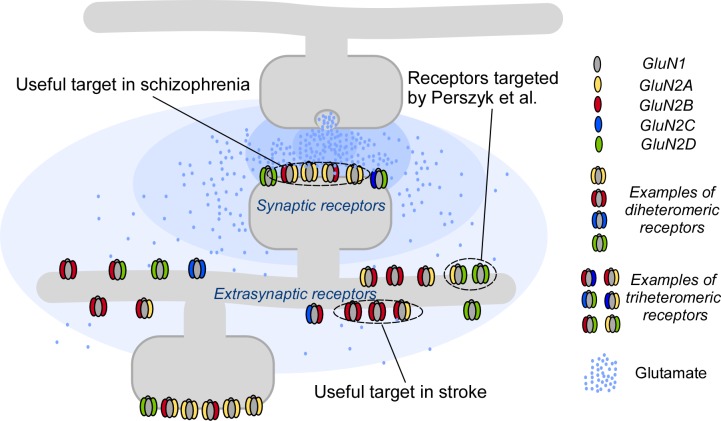Figure 1. Targeting NMDA receptors.
A neuron (gray; top) communicates with a second neuron (gray; bottom) by releasing molecules called neurotransmitters into the synapse between the two neurons; the neurotransmitters then bind to and activate receptor proteins on the second neuron. The neurotransmitter glutamate (blue dots) and the NMDA receptors (colored shapes) it binds to, are essential for most processes in the brain. Many disorders, including schizophrenia and stroke, are associated with faulty activity of the receptors. NMDA receptors contain two GluN1 subunits (gray ovals) and two GluN2 subunits (colored ovals). Perzsyk et al. discovered a chemical compound that can bind to receptors outside the synapse (extrasynaptic receptors), where glutamate levels are low (light blue shaded areas). Synaptic receptors, where glutamate levels are high (dark blue shaded areas), are an ideal target for treatment of schizophrenia.

